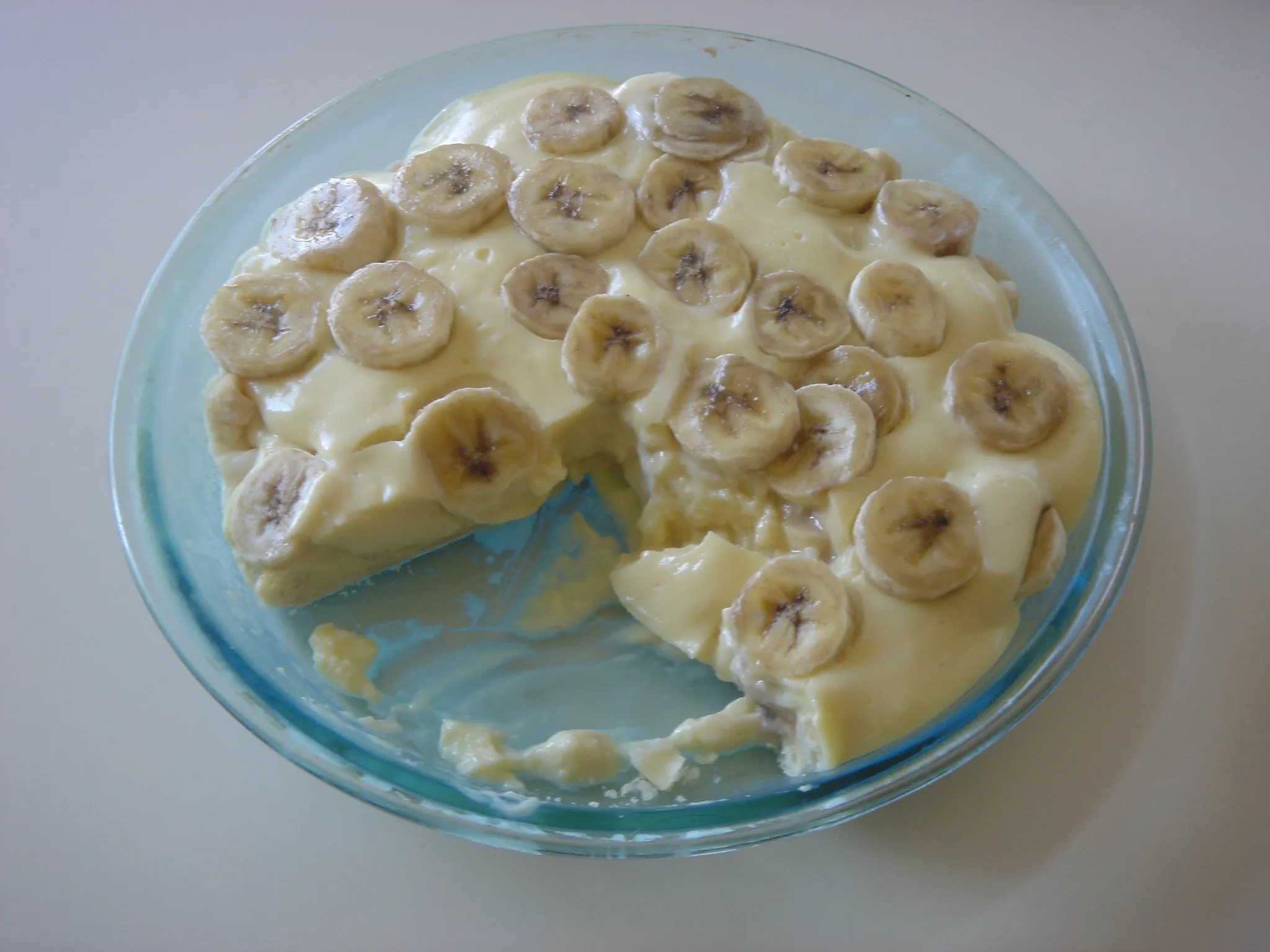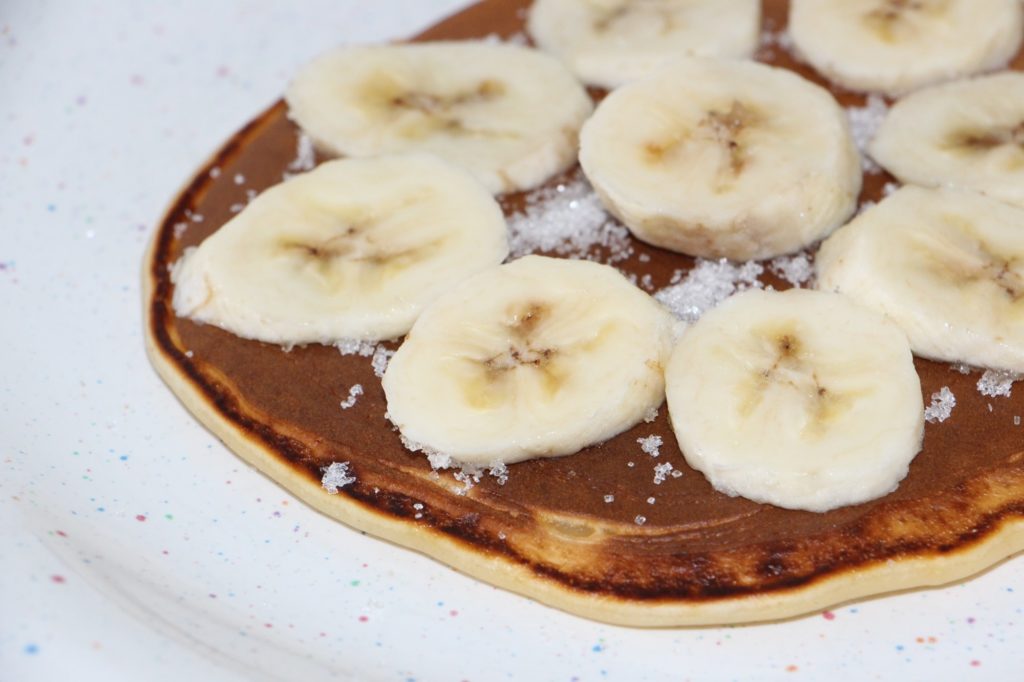
Are you craving a delicious and moist banana cake? Look no further! In this article, we’ll share with you a simple and foolproof banana cake recipe that uses self-raising flour. Whether you’re a baking novice or a seasoned pro, this recipe will guide you through the process step by step, ensuring a perfect result every time. Get ready to enjoy a slice of heaven with this mouthwatering banana cake!
If you have some overripe bananas sitting on your kitchen counter, it’s the perfect time to put them to good use by making a delectable banana cake. With the help of self-raising flour, this recipe takes the guesswork out of measuring and combining multiple ingredients. You’ll be amazed at how easy it is to achieve a light and fluffy texture without the need for additional leavening agents. So, gather your ingredients and let’s get started on this delightful banana cake journey!
The Basics: What is Self-Raising Flour?

If you’re a baking enthusiast or simply enjoy whipping up delicious treats in the kitchen, then you’ve probably come across self-raising flour. But what exactly is self-raising flour and how does it work?
Self-raising flour is a versatile type of flour that already contains a raising agent, typically baking powder, mixed in. This means that when you use self-raising flour in your baking recipes, you don’t need to add any additional leavening agents like baking powder or baking soda. It’s a convenient option that saves you time and ensures consistent and reliable results.
The magic behind self-raising flour lies in its ability to create light and fluffy textures in your baked goods. The baking powder in the flour reacts with moisture and heat in the oven, causing carbon dioxide gas bubbles to form. These bubbles expand during baking, giving your cakes and other treats that sought-after rise.
Using self-raising flour in your banana cake recipe is a fantastic choice. It simplifies the baking process and guarantees a perfect result every time. By using self-raising flour, you can achieve a light, airy, and tender cake without worrying about the proportions of baking powder or soda.
When selecting self-raising flour for your banana cake, make sure to check the expiration date on the packaging. Like any other ingredient, self-raising flour can lose its effectiveness over time, resulting in a less-than-desirable texture in your baked goods. So, always use fresh self-raising flour for the best results.
Now that you understand the basics of self-raising flour, you’re ready to dive into the next step of our banana cake recipe. Let’s move on to the exciting part – gathering the ingredients and getting ready to bake your scrumptious banana cake.
Step-by-Step Guide to Making Banana Cake with Self-Raising Flour
Making a banana cake with self-raising flour is a simple and enjoyable process. With just a few ingredients and some overripe bananas, you can create a delicious cake that is moist, fluffy, and bursting with banana flavor. Follow this step-by-step guide to create a banana cake that will impress your family and friends.
Step 1: Gather Your Ingredients
Before you begin, make sure you have all the necessary ingredients on hand. You will need:
- 2 cups of self-raising flour
- 1/2 cup of unsalted butter, softened
- 1 cup of granulated sugar
- 2 large eggs
- 3 ripe bananas, mashed
- 1/2 cup of milk
- 1 teaspoon of vanilla extract
Step 2: Preheat the Oven
Preheat your oven to 350°F (175°C) and grease a 9-inch (23 cm) round cake pan. This will ensure that your cake bakes evenly and doesn’t stick to the pan.
Step 3: Cream the Butter and Sugar
In a large mixing bowl, cream together the softened butter and granulated sugar until light and fluffy. You can use an electric mixer or mix by hand with a wooden spoon. This step helps to incorporate air into the batter, resulting in a lighter texture.

Step 4: Add the Eggs
Add the eggs, one at a time, to the butter and sugar mixture, beating well after each addition. This helps to bind the ingredients together and create a smooth batter.
Step 5: Mash the Bananas
In a separate bowl, mash the ripe bananas with a fork until they are smooth and no large chunks remain. The bananas should be overripe, as they will add natural sweetness and moisture to the cake.
Step 6: Combine the Dry and Wet Ingredients
Add the mashed bananas to the butter and sugar mixture, along with the vanilla extract. Mix well to combine. In another bowl, sift the self-raising flour to remove any lumps. Gradually add the flour to the banana mixture, alternating with the milk. Mix until just combined, being careful not to overmix.
Step 7: Bake the Cake
Pour the batter into the greased cake pan and smooth the top with a spatula. Bake in the preheated oven for approximately 45-50 minutes,
Ingredient List for Banana Cake with Self-Raising Flour
When it comes to making a delicious banana cake, having the right ingredients is key. Here’s a list of what you’ll need to create a scrumptious banana cake using self-raising flour:
- Bananas: Of course, you’ll need ripe bananas for that sweet and moist flavor. Look for bananas that are yellow with brown spots, as they’ll be the perfect level of ripeness for your cake.
- Self-Raising Flour: This special type of flour already contains baking powder, which helps the cake rise. Be sure to use self-raising flour specifically, as it will give your cake the perfect texture.
- Butter: You’ll need unsalted butter for a rich and creamy taste. Make sure it’s at room temperature, so it’s easier to cream with the sugar.
- Sugar: Granulated sugar is the way to go for this recipe. It adds sweetness and helps to create a light and fluffy texture.
- Eggs: Eggs act as binders and add structure to the cake. Make sure they’re at room temperature to ensure even mixing.
- Vanilla Extract: A splash of vanilla extract enhances the flavor of the cake and adds a touch of warmth. It’s a small but important ingredient that shouldn’t be overlooked.
- Milk: Adding a bit of milk helps to keep the cake moist and tender. You can use any type of milk you prefer, whether it’s whole milk, almond milk, or even coconut milk.
- Salt: Just a pinch of salt helps to balance out the sweetness and enhances the overall flavor of the cake.
Now that you have all the necessary ingredients, you’re ready to start creating your banana cake with self-raising flour. Get ready to enjoy a moist and flavorful treat that will leave you craving for more. Let’s move on to the next step: creaming the butter and sugar.

Tips and Tricks for Perfect Banana Cake with Self-Raising Flour
« Delicious Banana Cake Recipe by Hebbars Kitchen: Easy, Moist, and Fluffy
How to Make Banana Bread Without Baking Soda »
Making a banana cake with self-raising flour is a delightful way to use up those overripe bananas sitting on your counter. Not only will it satisfy your sweet tooth, but it will also fill your kitchen with the irresistible aroma of freshly baked goods. To help you achieve a perfect banana cake every time, here are some tips and tricks to keep in mind:
1. Use ripe bananas: The key to a flavorful banana cake lies in using bananas that are overripe. The riper the bananas, the sweeter and more fragrant they become. Look for bananas that have turned completely yellow with some brown spots on the skin. They should be soft and mash easily.
2. Measure your ingredients accurately: Baking is a science, and accurate measurements are crucial for a successful outcome. Use measuring cups and spoons to measure your ingredients precisely. Level off the top of the measuring cup or spoon with a straight edge to ensure accuracy.
3. Cream the butter and sugar properly: Creaming the butter and sugar together is an important step in creating a light and fluffy cake. Make sure the butter is soft and at room temperature before you start. Beat the butter and sugar together until the mixture is pale and creamy.
4. Use room temperature eggs: Adding cold eggs to the creamed butter and sugar mixture can cause the batter to curdle. To prevent this, take your eggs out of the refrigerator 30 minutes before you start baking. Room temperature eggs mix more easily and evenly.
5. Don’t overmix the batter: Overmixing the batter can result in a dense and tough cake. Once you add the dry ingredients to the wet ingredients, mix just until the ingredients are combined. It’s okay if there are a few small lumps remaining. Overmixing can develop gluten, resulting in a less tender cake.
6. Test for doneness: To ensure your banana cake is perfectly baked, insert a toothpick or a cake tester into the center of the cake. If it comes out clean or with a few crumbs clinging to it, your cake is done. If the toothpick comes out with wet batter, continue baking for a few more minutes.
By following these tips and tricks, you’ll be on your way to baking a moist and flavorful banana cake with self-raising flour. Enjoy your creation with a cup of tea or share it with your loved ones for a delightful treat
Storing and Serving Banana Cake with Self-Raising Flour
Once you’ve baked your delicious banana cake with self-raising flour, it’s time to think about how to store and serve it. Proper storage will help maintain its freshness and flavor, while serving it just right will enhance your overall enjoyment. Here are some tips to help you with both:

Storing Banana Cake:
- Cool Completely: Before storing your banana cake, make sure it has cooled completely. This will prevent condensation from forming and keep the cake from becoming soggy.
- Wrap it up: To keep your banana cake moist, wrap it tightly in plastic wrap or aluminum foil. This will help prevent it from drying out and also protect it from any odors in your refrigerator.
- Refrigerate or Freeze: If you plan on enjoying your banana cake within a few days, it can be stored in the refrigerator. However, if you want to keep it for a longer period, it’s best to freeze it. Make sure to wrap it well in plastic wrap and then place it in an airtight container or freezer bag.
- Thawing: When you’re ready to enjoy your frozen banana cake, simply remove it from the freezer and let it thaw at room temperature. This process may take a few hours, so plan ahead. Avoid thawing it in the microwave, as it can lead to uneven defrosting and affect the texture of the cake.
Serving Banana Cake:
- Room Temperature: For the best flavor and texture, serve your banana cake at room temperature. Allowing it to come to room temperature before serving will enhance its moistness and bring out the flavors.
- Garnish Options: Consider adding a touch of elegance to your banana cake by garnishing it with a dusting of powdered sugar, a dollop of whipped cream, or some fresh banana slices. These simple additions can elevate the presentation and add a burst of flavor.
- Accompaniments: Banana cake pairs well with a variety of accompaniments. Consider serving it with a scoop of vanilla ice cream, a drizzle of caramel sauce, or a sprinkle of chopped nuts for some added indulgence.
Remember, a well-stored and perfectly served banana cake with self-raising flour is sure to impress both your taste buds and your guests. So, follow these tips and enjoy every delicious bite of your homemade banana cake.
Conclusion
Now that you have all the necessary information and steps, you’re ready to embark on your banana cake baking adventure! By following this guide, you’ll be able to create a moist and flavorful cake that will surely impress your family and friends.
Remember to gather all the ingredients before you begin and pay special attention to the creaming process, as it forms the foundation of a light and fluffy cake. Be sure to combine the dry and wet ingredients just until they are incorporated, and avoid overmixing to prevent a dense texture.

Once your cake is baked to perfection, allow it to cool completely before storing it. This will ensure that it stays moist and delicious. Wrap it tightly to protect it from drying out, and when it’s time to serve, bring it to room temperature for the best flavor and texture.
Feel free to get creative with your garnishing options and consider serving the cake with accompaniments like whipped cream or a scoop of vanilla ice cream. These additions will enhance both the presentation and taste of your banana cake.
So go ahead and give this recipe a try. Enjoy the process and savor the delightful results of your homemade banana cake!










